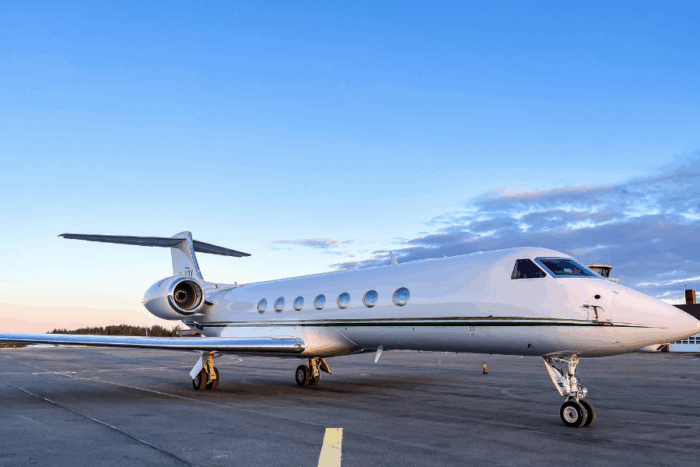- Home
- Articles
- Entrepreneur
- Private Jet Ownership for Investors and Global Entrepreneurs
Private Jet Ownership for Investors and Global Entrepreneurs
June 10, 2025
Private aviation is no longer just about luxury.
For high-level investors, entrepreneurs, and global citizens, it’s an essential tool for mobility, privacy, and control.
Owning a private jet goes far beyond flying in comfort. It means bypassing commercial delays, maintaining tight schedules across different jurisdictions, and gaining strategic access to offshore opportunities, second residences, and citizenship-by-investment destinations.
In a world where timing, privacy, and jurisdictional arbitrage matter more than ever, private aviation allows serious investors to move faster, conduct business in multiple markets on the same day, and operate independently of commercial airline limitations.
Against a backdrop of tightening regulations, shifting borders, and growing demand for agile wealth management, private aviation offers rare leverage.
It supports everything from cross-border operations and on-demand meetings to rapid repositioning in response to political or tax changes.
For those building a life across multiple countries, a jet is a mobile base. For those securing tax residency or applying for citizenship, it enables presence and punctuality on their own terms.
But with high utility comes high complexity. Ownership models, operational costs, international compliance, and tax-efficient structuring all require expert navigation.
That’s why the Nomad Capitalist team has put together this comprehensive guide to private jet ownership – not as a luxury purchase but as a deliberate asset within a broader strategy for global wealth, mobility and freedom.
Pros and Cons of Jet Ownership

Private jet ownership is a significant investment that requires deep pockets and a love for the high-flying lifestyle. But for those who can afford it, the benefits are unmatched:
They include:
- An invaluable tool for global business operations
- An opportunity to promote your brand and image through a statement
- Bypassing airport queues and unrivalled privacy
- Flexibility to cover multiple time zones effortlessly
- Freedom to create a seamless, personalised travel schedule
- Ability to cover multiple time zones in a single day without commercial constraints
- Unmatched comfort for global travel
- Cutting-edge technology and long-distance capabilities.
In the world of ultimate luxury, owning a private jet is one of the most extravagant symbols of wealth and success. However, it’s a big investment.
The cons include:
- A private jet is seriously expensive to maintain
- Acquiring a jet is expensive
- Additional costs such as taxes, registration and delivery fees
- Unforeseen repairs, such as engine failures
- Depreciation can be significant
- Aviation fuel costs are soaring.
The Cost of Private Jet Ownership
From the upfront price to maintenance, fuel and even parking fees, owning a private jet comes with some jaw-dropping annual operating expenses.
Private jets are the ultimate status symbol, but most people don’t realise how much it costs beyond the initial purchase.
It’s not just about buying the jet – it’s the ongoing expenses that add up. To understand what we’re dealing with, let’s start with the purchase price.
The initial cost of purchasing a private jet varies significantly based on the size, model and amenities included.
Smaller jets, like the Cessna Citation M2, designed for short regional flights, can cost around US$5 million, making them accessible for wealthy individuals who prioritise efficiency over luxury.
On the other end of the spectrum, top-tier models like the Gulfstream G700, known for its long-range capabilities and ultra-comfortable interiors, can reach prices of over US$75 million.
Of course, you could also consider owning a private yacht. See our ultimate guide for more details.
Now that we’ve covered the obvious operating costs, let’s dive into some of the less obvious but equally important financial considerations.
Like any significant asset, private jets depreciate over time.
Typically, a new jet loses about 10% to 15% of its value annually. This means that a US$50 million jet might only be worth US$35 million after a few years.
Depreciation is a critical factor for potential owners to consider, as it can significantly impact the overall cost of ownership.
Like high-end cars, private jets start losing value the moment they leave the hangar – but the scale is far steeper. Within five years, a US$50 million jet could drop to US$35 million.
The cause? Rapid tech advances and shifting buyer preferences for newer, flashier models.
This rapid depreciation is partly due to advances in aviation technology, where newer models with better efficiency and amenities are constantly introduced to the market.
The more frequently a jet is used, the faster it depreciates, as wear and tear also contribute to its reduced market resale value.
Despite this, the rich and famous often have the financial flexibility to absorb these losses.
Private Jet Maintenance
Unlike commercial aircraft, which have dedicated ground crews, private jets require regular maintenance to ensure their safety and functionality.
For most jets, this translates into annual maintenance costs ranging from US$500,000 to US$1 million, depending on the aircraft’s size and complexity.
However, regular maintenance is crucial to ensure the safety and performance of the aircraft.
Annual maintenance costs include routine inspections, engine overhauls and part replacements.
Smaller inspections might occur every 200 to 300 flight hours, but more extensive checks, known as C&D checks, are performed every few years.
These comprehensive checks can take several weeks and cost hundreds of thousands of dollars. Engine maintenance is another significant expense.
Regular maintenance includes engine checks, inspections of avionics systems, and structural evaluations to ensure the jet is flight-ready.
In addition, unforeseen repairs such as engine failures, damage to the fuselage or issues with landing gear can add another US$1 to US$2 million every few years.
Fuel Costs
Fuel costs are among the largest recurring expenses for private jet owners, and they can quickly add up, especially for frequent flyers.
Private jets don’t sip fuel; they guzzle it. At around US$4 – US$6 per gallon and a burn rate of up to 500 gallons per hour, just one long-haul flight can rack up a US$50,000 fuel bill. That’s the price of speed, privacy and power at 40,000 feet.
Furthermore, fuel prices fluctuate, which can make it difficult for owners to predict costs accurately.
Crew Salaries
Flying private doesn’t just mean skipping the lines; it means having a trusted crew dedicated to your comfort and safety.
A typical crew includes two pilots since federal regulations require two for safety during long flights, as well as at least one flight attendant to ensure passenger comfort.
Pilot salaries alone range from US$130,000 to US$200,000 per year, with long-haul pilots often earning more due to the extra hours and complex flight planning required for international private jet travel.
Flight attendants, who ensure safety and provide personalised services during flights, typically earn yearly salaries of between US$60,000 and US$100,000, depending on long-haul or luxury aircraft type.
This cost can escalate for larger jets or jets with more frequent travel, with some owners paying upwards of US$500,000 per year just for staffing.
Fees and Charges
Landing fees and handling charges at airports are also part of the operational budget.
These fees vary based on the airport and can range from a few hundred to several thousand dollars per landing. Insurance is another critical expense, with annual premiums typically running into the tens of thousands of dollars.
When not in use, a private jet needs a place to stay, and hangar fees are a crucial part of jet ownership costs.
Renting space at an airport to park a private jet can cost anywhere from US$50,000 to US$200,000 annually, depending on the location, airport size and the type of aircraft.
Insurance for a private jet is essential and can be surprisingly costly.
Coverage typically includes hull insurance to protect the aircraft itself, liability insurance for damages caused during flight, and additional coverage for passengers and crew.
For a private jet worth US$50 million, insurance premiums can range from US$150,000 to above US$500,000 annually, depending on the aircraft’s value, usage and the owner’s risk profile.
Additional Luxuries
One of the main drawcards of purchasing private jets is the ability to customise them with luxury features that reflect their personal style.
The cost of these upgrades can be astronomical, with custom interiors, entertainment systems and other luxurious touches pushing the price of a jet well beyond its base price.
Interest Payments and Bank Charges
Financing a private jet is the route that most buyers consider.
Banks and financial institutions offer loans specifically for jet purchases, but these often come with high interest rates and require a substantial down payment.
The interest payments can add up over the years, increasing the total cost of ownership.
But depreciation and financing are just the beginning. Hidden costs can also surprise even the most seasoned jet owners.
Hidden Costs
The sticker price is just the beginning. Hidden costs, like mandatory software updates, surprise compliance inspections, or even VIP catering contracts, can sneak up fast.
For instance, software updates for the avionics systems are essential to ensure the jet meets the latest safety standards. These updates can be costly and are often required multiple times throughout the jet’s lifespan.
Fractional or Full Jet Ownership?

For those who desire the private jet experience without the full commitment, there are viable alternatives to full ownership.
With private jet fractional ownership, you buy a fraction of an aeroplane. It’s usually an eighth or a quarter, depending on the deal you do.
Fractional ownership programs allow you to purchase a share of a jet and pay only for the hours you fly. This means you get all the benefits of owning a private jet without the hassle and cost of full ownership.
Jet cards are another popular option.
These prepaid cards offer a certain number of flight hours on a variety of aircraft, providing flexibility and convenience.
Chartered services allow you to book a private jet for a specific trip, providing a luxury experience without any long-term commitments.
This option is ideal for occasional flyers who want to enjoy the benefits of private aviation.
So, should you buy a fraction of an aeroplane or just go out and buy it whole?
It depends on your budget and aspirations.
After the pandemic, fractional ownership companies decided to increase the size of their fleets to meet a surge in demand.
With larger fleets of aircraft, there is more choice. However, when you buy a fraction, you never get the same aircraft for a flight or the same crew.
You can’t put your name or logo on the plane.
You can’t customise the interior to your liking, and most importantly, the aircraft isn’t available right away, and you may have to wait for it to become available.
If you live in a more remote area, perhaps outside a main city, fractional ownership can lead to delays in accessing the aircraft.
You won’t have an aeroplane available 24/7, so fractional ownership can be more inconvenient.
When you own it outright, you have the ability to fly when you choose, to have your own trusted pilot and crew every time, and to fashion your own interiors and features.
Of course, all this comes at an additional cost.
Full jet ownership is like a flying extension of your lifestyle and personality.
Imagine stepping into your jet to find a bespoke interior designed to your exact specifications.
Advanced entertainment systems, high-speed internet and state-of-the-art communication systems are just the beginning.
Some owners even install gyms, showers and full kitchens to ensure that their every need is met while in the air.
Jet Ownership Best Practices
Consider these factors to help you get the most out of a private jet investment:
- Understand your ‘why’: The first step is to determine why you want a private jet. It’s vital to have a well-rounded reason for buying the aeroplane. You need to understand the benefits it will bring, how many deals you’re going to close as a result of using the private jet and how much money it is going to make you. First and foremost, a private jet is a business tool.
- Know how you’ll operate it: Before you commit, you must know where you’re going to go with this aeroplane, what you’re going to do when you get there and where you’re going to base the aeroplane.
- Choose the right pilots: You want to attract good talent and retain that talent. The pilots keep you safe. Ideally, even if you have a plane for a few years and then sell it, you’ll want to keep the same pilots if you buy another one. Having a trusted crew and keeping it will pay dividends.
- Know who’s going to manage the aeroplane: You’ll need a detailed plan for everything from flight planning and pilot training requirements to maintenance, avionics upgrades, insurance and choosing a hangar.
- Know the true cost of ownership: The price you pay is influenced by factors such as the jet size, range and brand reputation. But it’s not just about the purchase price. When purchasing a private jet, potential buyers must consider additional ongoing costs such as taxes, registration and delivery fees, which can add significantly to the total cost.
Private Jet Ownership: FAQs
An entry-level private jet will cost in the range of US$2 million, while a top-rated Gulfstream jet can cost as much as US$75 million in initial investment.
With fractional aircraft ownership, you own a fraction of a jet, usually an eighth or a quarter. Under this arrangement, you schedule the use of the jet with a group of other owners.
Best practices for jet ownership include understanding why you want to buy one, the practical implications, hiring the right pilot and crew and the hidden costs and fees of aircraft management.
You can hire an aviation consultant or a private jet practice to advise you on the technicalities of purchasing a jet and on executive jet management. An aviation lawyer can assist with the legal implications.
Outside of the purchase price, depreciation, taxes, insurance costs, interest, registration and delivery fees, staffing costs, maintenance and hangar fees are all additional costs.
If you’re not using a private jet, you can lease it out to others. However, the true value of owning a private jet lies in the opportunities and brand value it can add to your business.
Take Your Wealth to New Heights

Jet ownership is more than transportation – it’s a statement of intent.
For some, it’s a business enabler, while for others, it’s the ultimate expression of independence and control.
But regardless of whether it functions as a flying boardroom or a private retreat, owning a private jet marks a shift in how you operate – not just where you go, but how you move through the world.
When structured intelligently, private aviation stops being a liability and becomes an asset, a strategic lever that enhances global mobility, sharpens your timing, and supports cross-border success.
If jet ownership aligns with broader goals such as establishing international tax residency or expanding into new markets, then a tailored approach is essential.
Nomad Capitalist builds bespoke strategies for investors and entrepreneurs who want to reduce their tax burden, protect their assets, secure second citizenships, and unlock greater global freedom.
To explore how private aviation can fit into your long-term plan, reach out to start the conversation.



Why Singapore’s Startup Hub is the Best in Asia
Once entrepreneurs hit their stride, many set their sights on relocating to a global startup hub that offers business-friendly policies, world-class infrastructure and access to international markets. Some wait until their ventures gain momentum, while others move early, incorporating as soon as a profitable idea takes shape. Enter Singapore – a sleek, future-ready city-state that’s […]
Read more

Which Country is Best for Startups in Asia?
Asia isn’t just rising – it’s redefining where and how global business gets done. With world-beating adoption, cost-effective talent and rapidly growing consumer markets, the region offers serious upside for entrepreneurs looking to start, build or scale. But with opportunity comes complexity. In fact, the region has so many options it can be daunting to […]
Read more

The Most Luxury, Tax-friendly Places for Female Entrepreneurs
What does luxury mean in 2025? For some, it’s the usual markers – a sleek villa by the sea, a supercar in the driveway or a yacht anchored in an exclusive marina. But for today’s successful woman entrepreneurs, true luxury goes much deeper. It’s about freedom, control and the ability to build a life and […]
Read more




